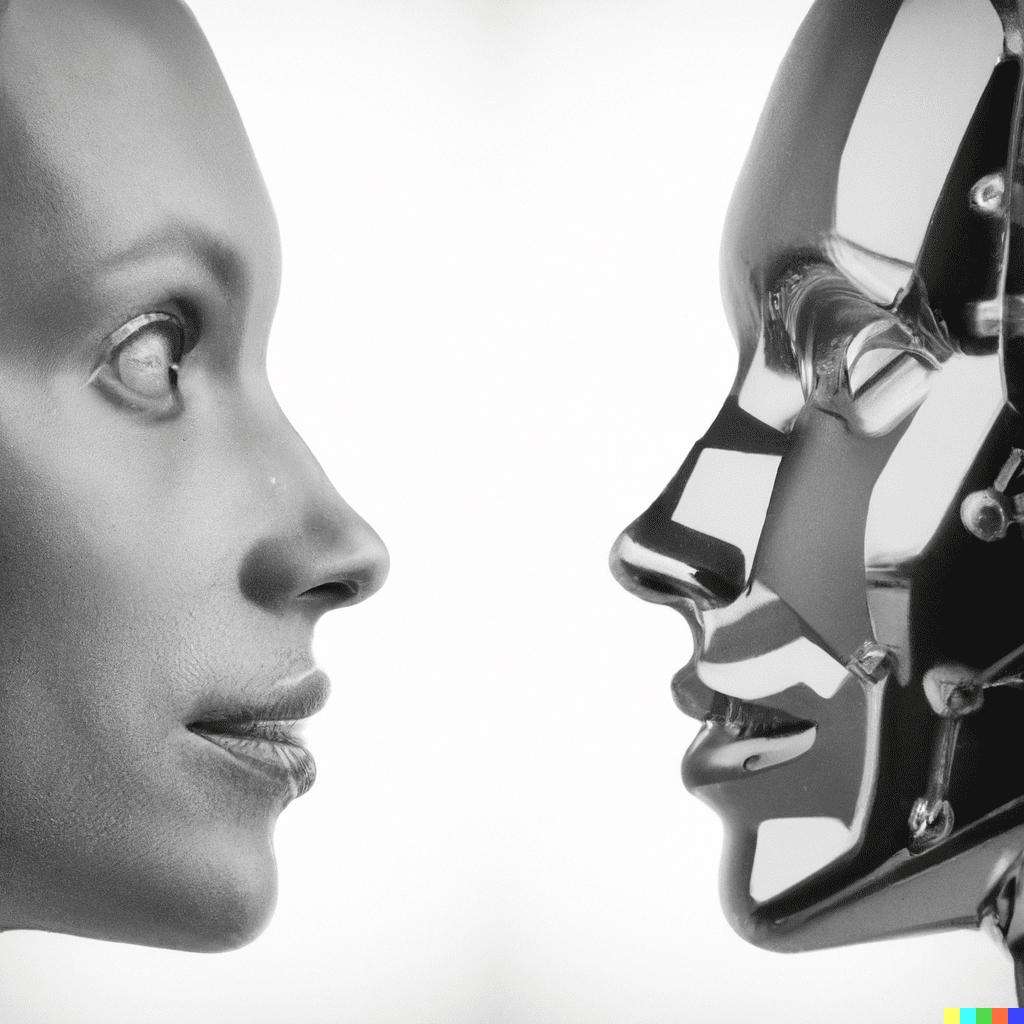TL;DR: Recently, OpenAI released ChatGPT to the world. It has opened a pandora’s box of possibility.
For me, the first time I heard about ChatGPT was December 13th. The email chain I was added to was concerned how it would impact learning in schools. Until that point, I had never heard of OpenAI ChatGPT, but I was well aware of another OpenAI product, DALL-E, as I was in the beta early on.
As a refresher, DALL-E is a deep learning model developed by OpenAI that is capable of generating images from text descriptions, using a technique known as neural style transfer. DALL-E stands for “Deep Artificial Neural Language for images, ELementary.” It was trained on a large dataset of text-image pairs and uses this training to generate images that match a given text description. For example, if you provide the text description “a two-story pink house with a white fence and a red door,” DALL-E might generate an image of a house that looks like this. DALL-E is an example of a type of model called a generative model, which means it can generate new data based on a set of input parameters.

DALL-E is how I created the image for my last article. Idea – Small Form Factor Virtualized Server. It is also how I created the images for this article. If you look closely, in the lower corner of the image there is a color barcode to distinguish that the image was created by AI.
The newest tool from OpenAI is ChatGPT. “GPT” stands for “Generative Pre-training Transformer,” which is a type of language model developed by OpenAI. Language models are trained to predict the next word in a sequence of words based on the context provided by the preceding words. They can be used for a variety of natural language processing tasks, such as language translation, summarization, and generating text that is similar in style and content to a given input.
In layman’s terms, you can have a conversation with AI and have it generate both images as well as text. That is pretty spectacular. However, with every new technology there is a potential danger that lies within. Having worked in both higher education and public education over the past 20 years I can see how this tool has the power to transform the world as well as limit our future generations of students. How? Quite simply it makes it too easy for someone to write something that will bypass any known plagiarism system and be a unique piece of work.
Essentially, all forms of interaction come down to the following syntax:

Writing Test:
For example, look at something like Animal Farm. It is a well known piece of literature that many have to read in school. Instead of a student having to actually write a book report on the literature, they could simply turn to ChatGPT to perform the work. In a sense, delegating the work to a tool which limits the student since they are not actually putting in the work to learn.
As a test, here is my input to ChatGPT.

Within a few seconds I got a response that was lengthy and informative.
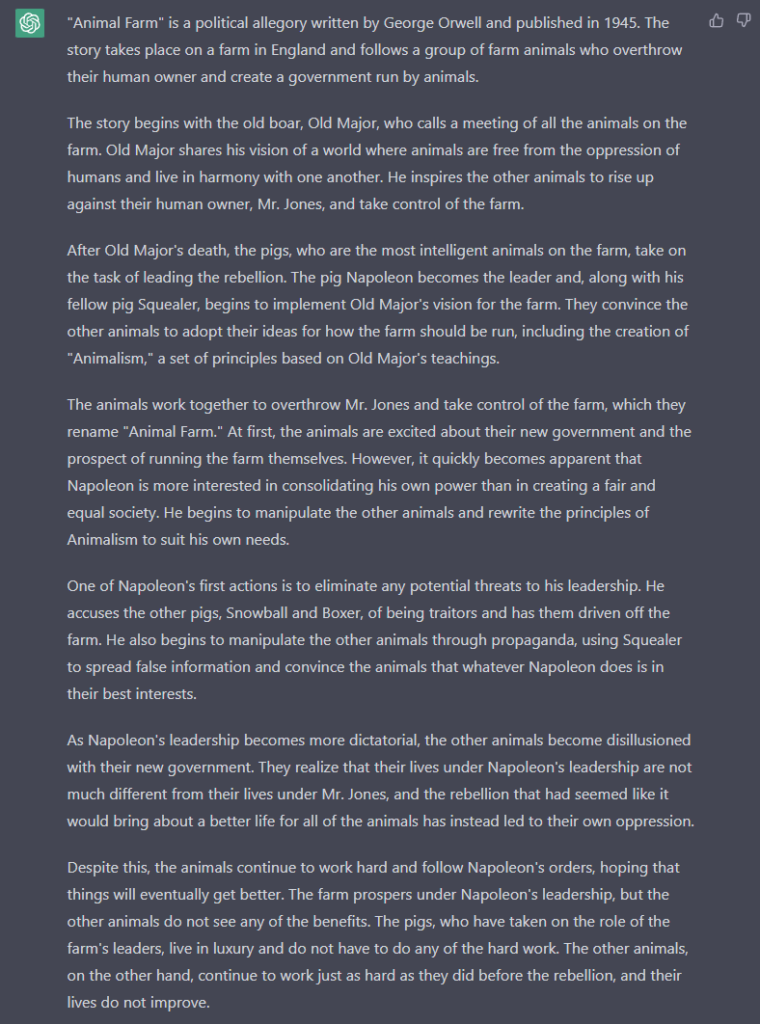
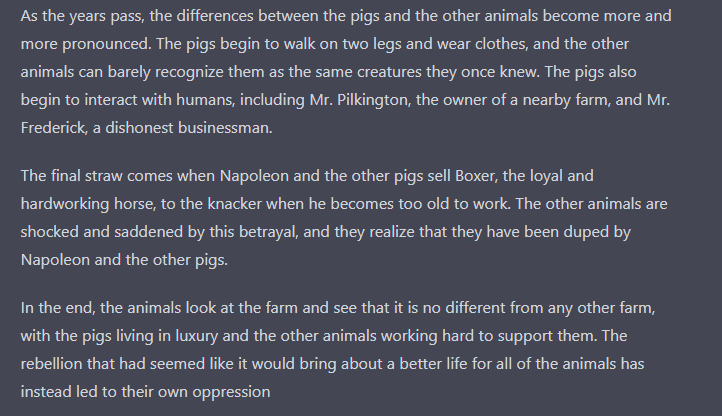
As an FYI, ChatGPT has a character limit so you have to ask it to continue.

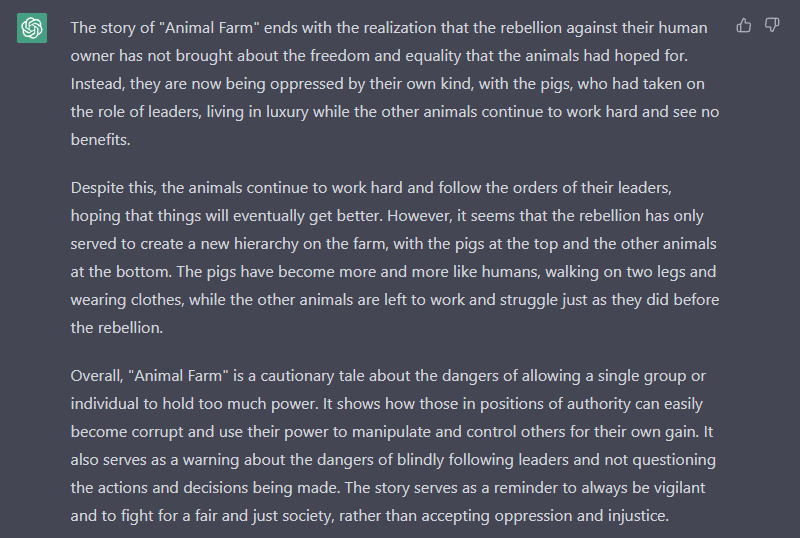
Now let’s check the word count. Verifying inside Word and you can see that it is indeed over 800 words.

Checking the list of characters and plot against Wikipedia and it does indeed ring true.
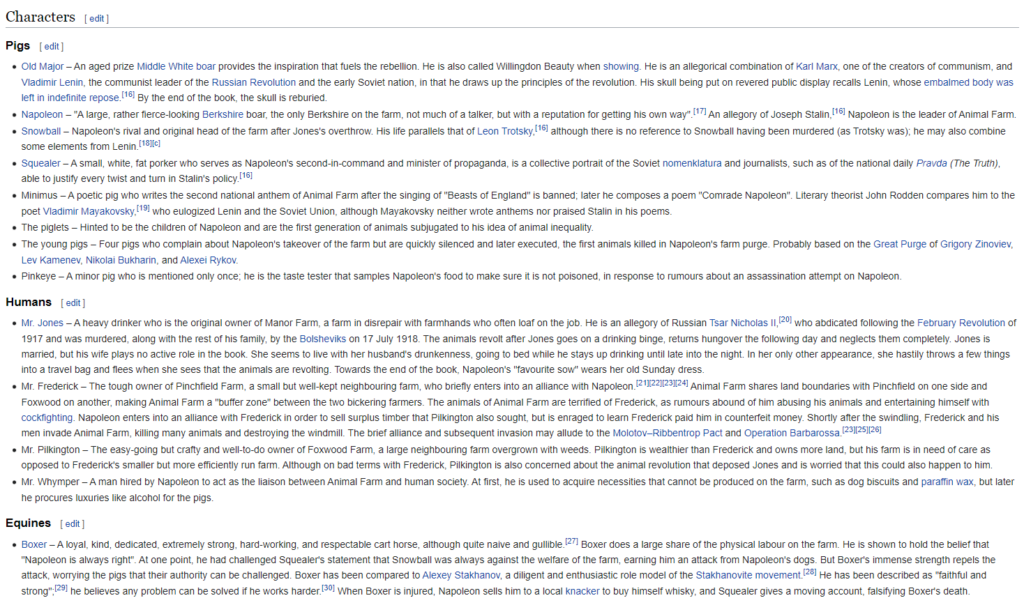
Now that this has begun, what are some other things this new tool can do?
Cover Letter Test:
So what about jobs? Many candidates today have to wade through dozens or hundreds of jobs. From non-standardized job application systems that require you to re-enter your information in rather than using a standardized approach from other sites ala LinkedIn, it can be a time consuming nightmare. For others to even start creating their first Cover Letter or Resume, it can be intimidating. Well, OpenAI has that “Cover”ed for you.


Ok, what about something in a different format altogether. What about programming?
Programming Test:

Yes, it wrote the code and even added comments to explain what it was doing. Amazing.
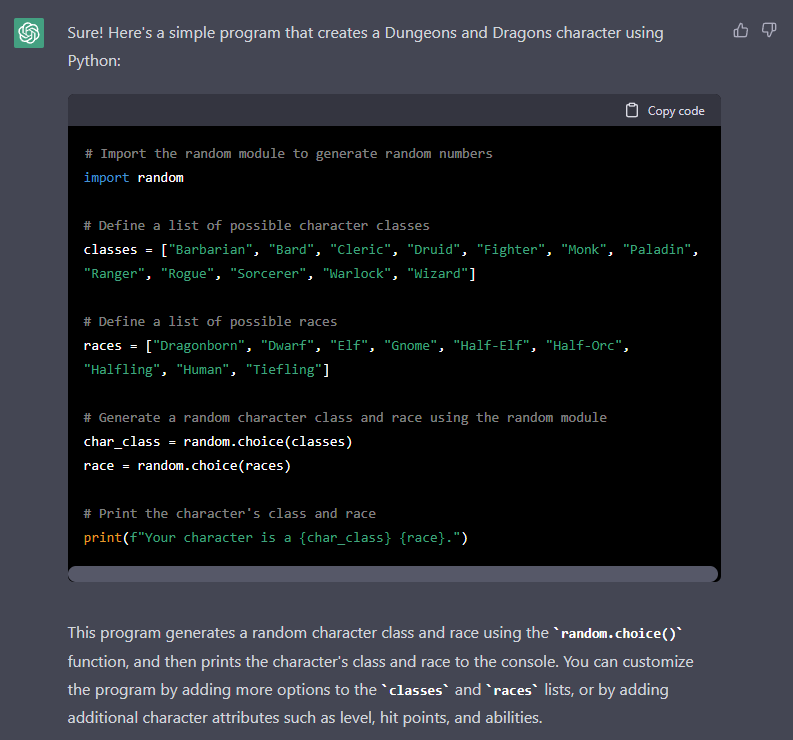
Checking our AI student’s work and we can see it worked. Fun fact, Palvaran was actually born a Half-Elf Ranger inside EverQuest. Neat coincidence.
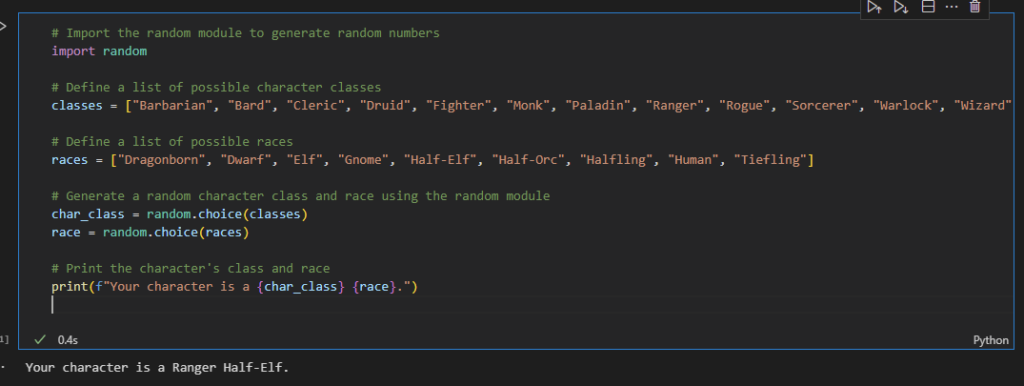
But what DND character does not have attributes? 18/00 anyone? For that we can just ask the AI to update the code. Since we are having a conversation the things we have told the AI are remembered for future context and reference.

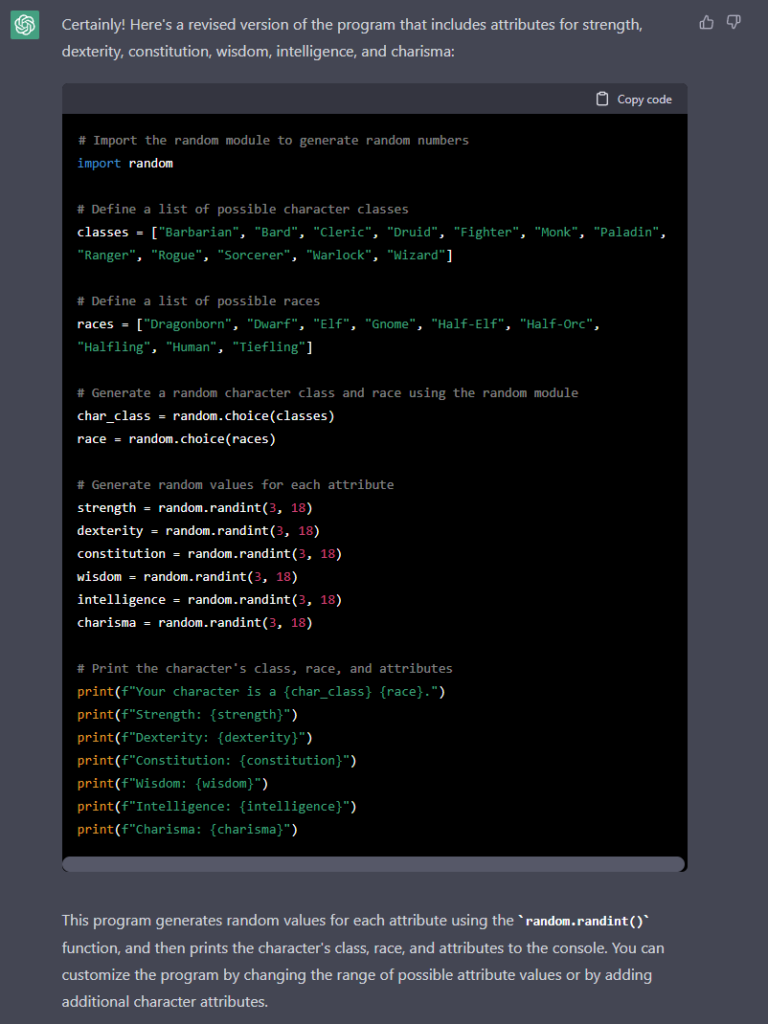
Checking our work and we can see that it did indeed update the code. Poor Palvaran has terrible wisdom and dexterity. I am not sure he would make a very good archer due to his dexterity and sadly his armor class is limited in what armor he can wear in the first place which limits his tanking potential.
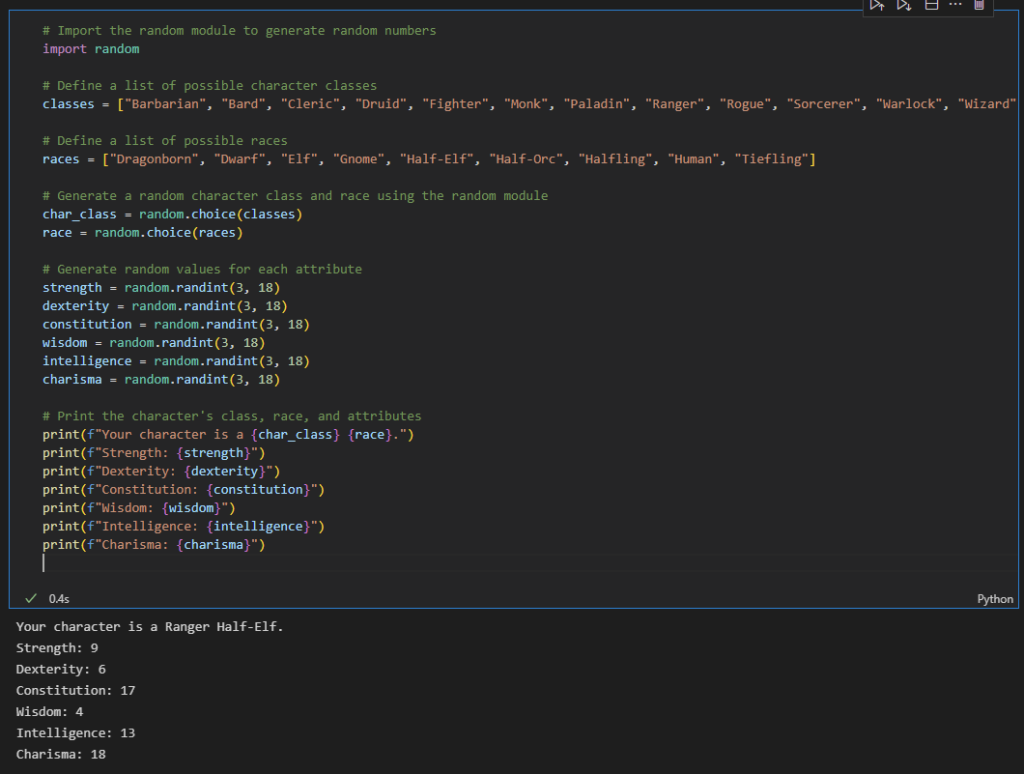
Let’s generate an entire party of adventurers now.


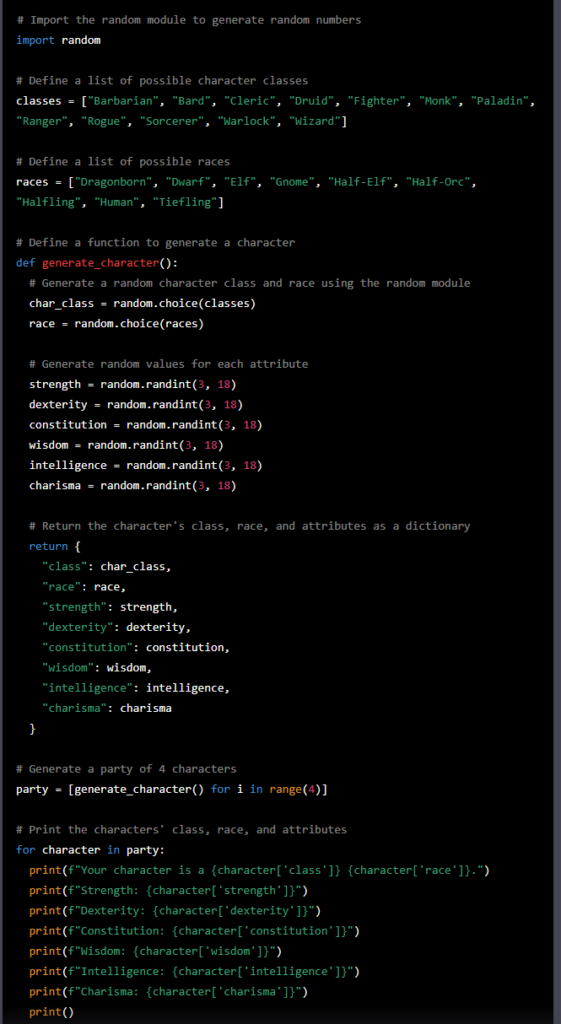

Verifying and sure enough we have a full party of adventurers now. This is the power of automation and scripting. It is fast, repeatable, and efficient. It is immensely powerful whether it is for infrastructure, endpoint management, or even DND character generation.
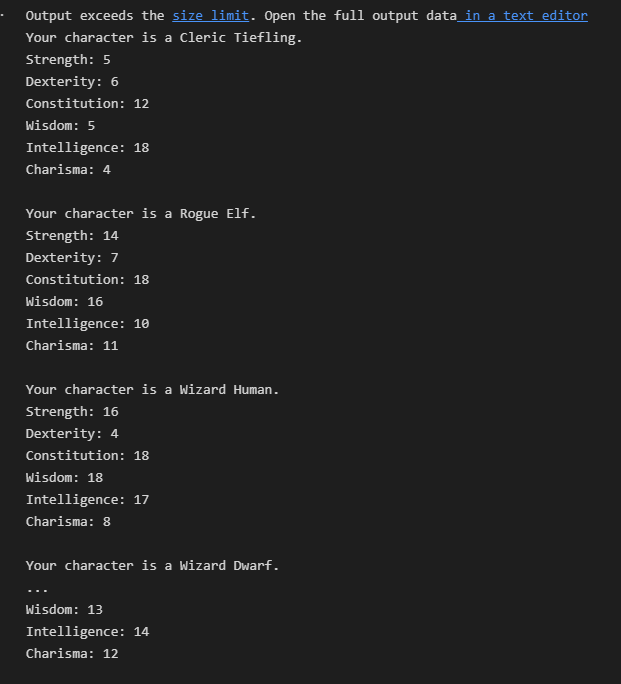
The real point of all this is that you can go back and forth updating as necessary all while in a conversation format. It feels like talking to that knowledgeable friend who likes to help.
This is why so many people see potential in what OpenAI is doing. These are just tools, but a tool in the correct person’s hand can make wonders occur. Have an idea? Want to try and make it happen? Just have a conversation about it to get started.
Combine the Tools:
Now let’s put these two tools together. As I am writing this article, I wanted to demonstrate the power of the tools and for content creation itself. For samples, I simply used what was around me or what popped up in my head. In this case, I was listening to EDM and a rabbit popped into my head.

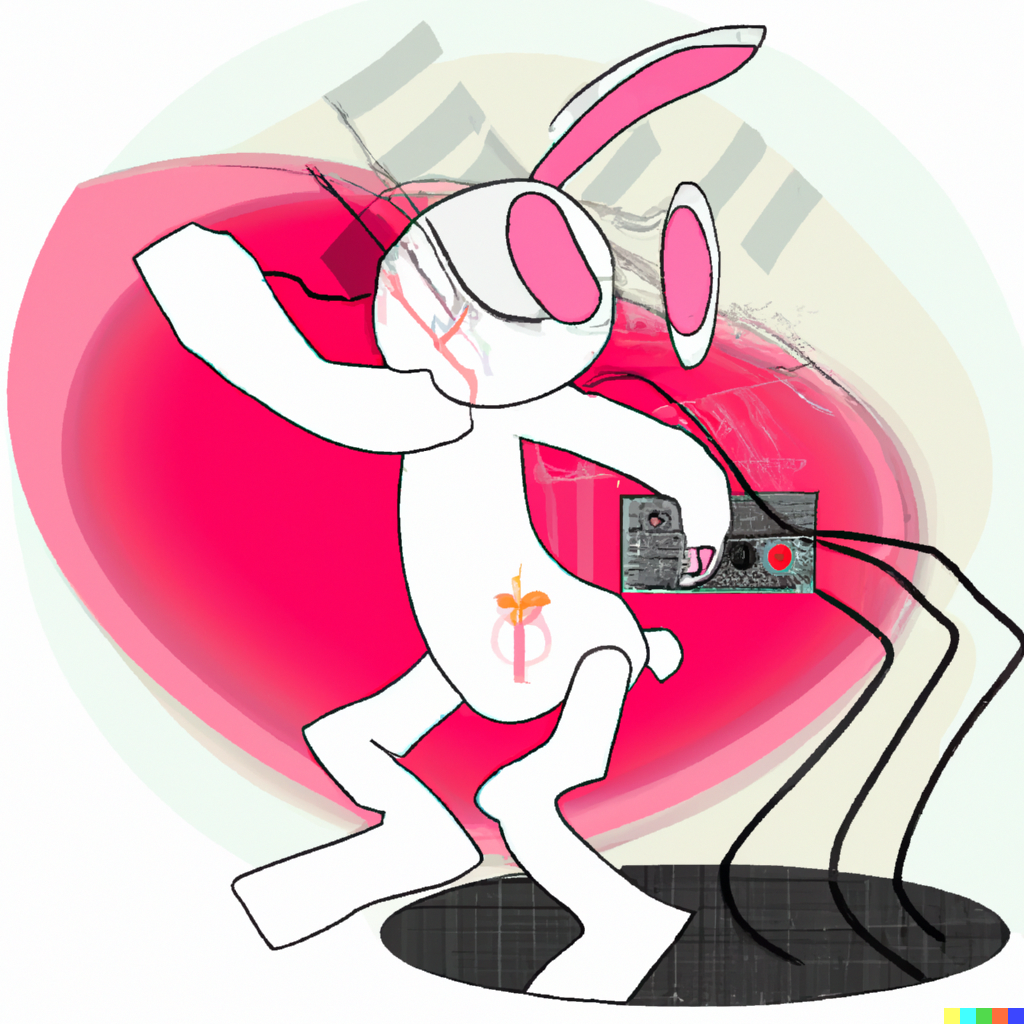
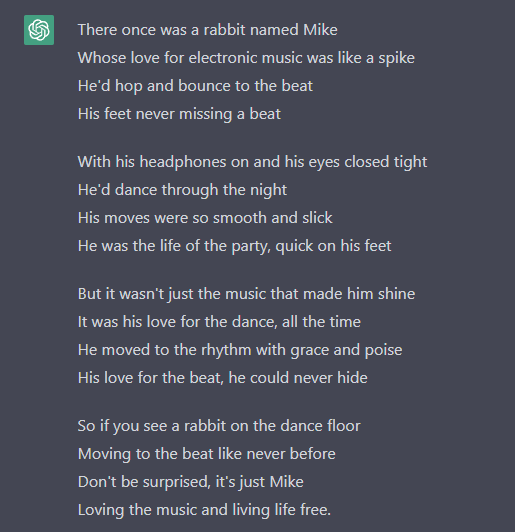
Summary and Closing Thoughts:
So where does that leave us as instructors and those trying to help the next generation grow and learn? It is a tough intersection we are at now. It reminds me of my college classes as I was not allowed to use a calculator for my exams. Instead, I was provided with a basic 10 key calculator that could only do PEMDAS. The fear was that students would cheat by having equations programmed into their own calculator. Several years later and that was seen as silly. Students were even allowed to have an index card with their own formulas on it that they could use.
In an age where nearly everyone looks things up and does Google searches this makes total sense. As a society, we are changing from remembering information to instead remembering how to access or find information. It used to be we remembered phone numbers and addresses, but now can you honestly remember more than a handful of phone numbers? If you can, bravo.
For me, ChatGPT reminds me of that same paradigm shift. For a time, institutions will be able to block access to ChatGPT. It is even possible to use federal or state regulations to limit access to it based on age or parental consent. However, as with Pandora’s box, the technology has been seen and eventually it will be a game of whack a mole. Instead, I challenge you the reader to question how we can embrace this technology and use it to make our society and our students even better.
